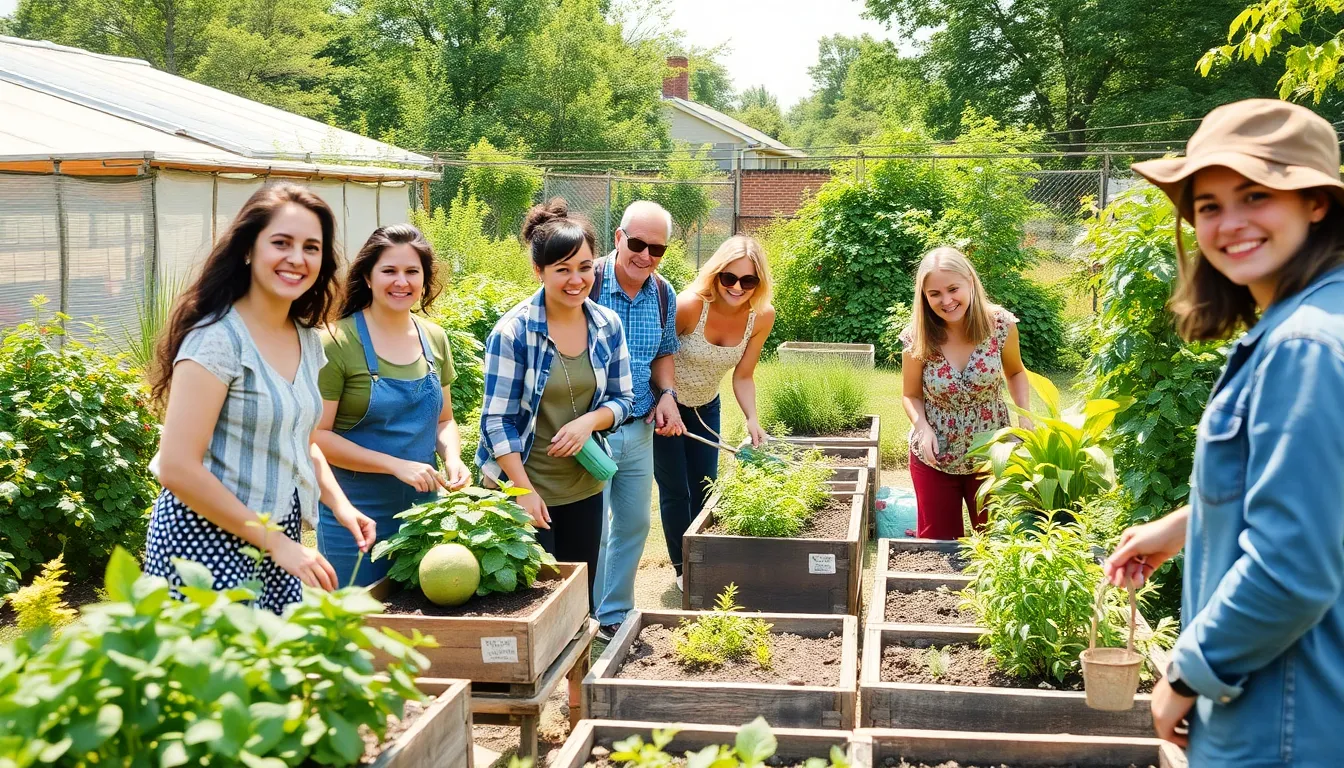In a world where plastic bags seem to multiply like rabbits and carbon footprints are the new fashion statement, embracing green living has never been more crucial. Imagine a life where your morning coffee doesn’t come with a side of guilt, and your home feels like a cozy eco-friendly haven. It’s not just a trend; it’s a lifestyle that’s good for the planet and even better for your conscience.
Table of Contents
ToggleWhat Is Green Living?
Green living refers to a lifestyle that prioritizes environmental sustainability. It encompasses various practices aimed at reducing one’s carbon footprint and minimizing waste. Emphasizing sustainable choices, individuals often select products made from eco-friendly materials.
Many people choose energy-efficient appliances to lower their electricity consumption. Organic foods, which use fewer pesticides, are also common in green living. Reducing water usage reflects another essential aspect of this lifestyle.
A zero-waste approach significantly impacts how individuals manage their daily activities. This method encourages the reuse and recycling of materials, thus diminishing landfill contributions. It’s common for families to switch to reusable shopping bags, minimizes plastic waste, and supports local markets to reduce emissions associated with transportation.
Moreover, green living promotes the use of public transportation, biking, or walking instead of driving. Each of these choices lowers greenhouse gas emissions and supports physical health. Additionally, individuals may invest in renewable energy sources, such as solar panels, leading to long-term savings and reduced reliance on fossil fuels.
To cultivate a comfortable and eco-friendly home, many adopt practices like composting and using non-toxic cleaning products. These methods create a healthier living environment while contributing to overall community wellness. Engaging in green living encourages individuals to reflect on their impact on the environment, making informed decisions for a sustainable future.
Benefits of Green Living


Green living offers numerous advantages, positively impacting various aspects of daily life.
Environmental Impact
Reducing waste significantly contributes to the health of the planet. Individuals adopting green living practices lower their carbon footprints through energy-efficient appliances and sustainable transportation choices. By utilizing reusable products, families help decrease plastic pollution. Engaging with local markets supports small businesses while reducing transportation emissions. Choosing renewable energy sources such as solar power lowers greenhouse gas emissions considerably. Composting and recycling practices contribute to the conservation of natural resources. A commitment to these practices fosters a cleaner environment for future generations.
Health Advantages
Embracing a green lifestyle promotes better health for individuals and communities. Minimizing exposure to toxic substances through eco-friendly cleaning products benefits overall well-being. Prioritizing organic foods allows individuals to consume fewer chemicals and pesticides. Physical activity increases through biking and walking, enhancing cardiovascular health. Access to green spaces boosts mental health and fosters social connections. Additionally, increased air quality from reduced emissions leads to fewer respiratory problems. Overall, green living encourages healthier habits and builds a supportive community atmosphere.
Tips for Practicing Green Living
Adopting green living practices can significantly impact both personal well-being and the environment. Here are some actionable tips for making sustainable changes.
Eco-Friendly Home Practices
Implementing eco-friendly home practices leads to a healthier living space. Choosing energy-efficient appliances reduce electricity consumption and lower utility bills. Using non-toxic cleaning products protects indoor air quality and minimizes chemical exposure. Composting kitchen scraps and yard waste creates nutrient-rich soil while cutting down on landfill waste. Installing LED bulbs offers longer-lasting illumination with lower energy use. Additionally, selecting sustainable materials for home decor supports responsible sourcing. Embracing these practices fosters a comfortable, eco-conscious home.
Sustainable Transportation Options
Exploring sustainable transportation options contributes to reduced greenhouse gas emissions. Opting for public transportation can significantly lower individual carbon footprints. Biking or walking short distances provides both an eco-friendly commute and boosts physical health. Carpooling or ride-sharing services reduce the number of vehicles on the road, easing traffic congestion. Driving fuel-efficient or electric vehicles enhances sustainability by minimizing fossil fuel reliance. Supporting local initiatives that encourage walking and biking creates community awareness around sustainable practices. These options promote cleaner air quality and enhance overall community well-being.
Challenges in Adopting Green Living
Adopting green living comes with several challenges that can hinder individuals from fully embracing sustainable practices. Understanding these obstacles is crucial for overcoming them.
Common Misconceptions
Many people believe that green living requires significant lifestyle sacrifices. They think sustainable options are only for the wealthy or that eco-friendly products are always more expensive. Such misconceptions often deter individuals from exploring sustainable choices. Others may assume that one person’s efforts in green living don’t make a difference. It’s essential to recognize that collective action, even small, contributes to significant environmental benefits. Awareness of these misconceptions can encourage individuals to adopt green practices without feeling overwhelmed.
Economic Considerations
Economic factors frequently pose challenges in adopting green living. The upfront cost of eco-friendly products and energy-efficient appliances can seem daunting. Many individuals hesitate to invest in these options due to perceived financial constraints. Long-term savings often offset initial expenses, yet that potential remains overlooked. Supporting local markets may also appear less convenient or costlier compared to larger chain stores. Understanding the long-term economic benefits tied to green living can help shift this perspective, encouraging sustainable choices that lead to cost savings over time.





